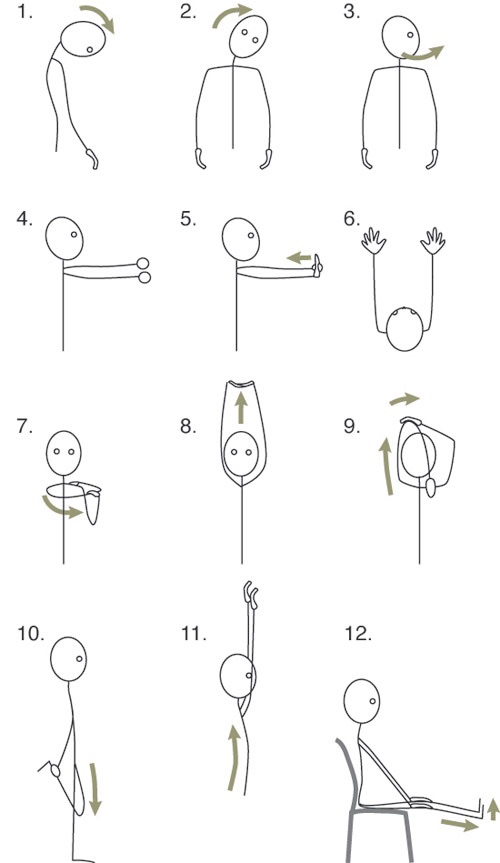Introduction
Four Types of Exercises that can help ease workplace pains
A simple set of workplace stretching exercises
Things to Remember
Introduction
Simple workplace exercises can help common office-worker complaints such as stiff neck, shoulder pain, aching muscles and abdomen pains.
Long hours working in one position (e.g. sitting in front a computer), repetitive actions (e.g. typing) and incorrect postures (e.g. repeatedly bending awkwardly to lift things) can all lead to tense muscles which can cause pain and discomfort in the neck, back, shoulders, waist, arms, knees or ankles.
If these symptoms are ignored they will get worse and begin to affect work performance. But there are straightforward and effective solutions. Proper posture, improved work area design, appropriate office equipment and simple workplace exercises will all provide pain relief.
Four Types of Exercises that can help ease workplace pains
Aerobic exercises for enhancing cardio-respiratory function
Strengthening exercises for building up muscle strength
Relaxation exercises for stress and anxiety relief
Stretching exercises for relaxing tense muscles
A simple set of workplace stretching exercises
Try this 12-point set of simple stretching exercises to help relax tired muscles at work. They can be done in the office and require no equipment.
1. Place you head down and chin down
2. Tilt your head toward right and left shoulders
3. Turn your head right and then left
4. Squeeze your hands
5. Stretch your forearms
6. Stretch your fingers
7. Stretch the outer muscles of your upper arms
8. Stretch the inner muscles of your upper arms
9. Stretch your armpit muscles
10. Stretch your quadriceps
11. Stretch your spine and then gradually bend your back
12. Straighten your legs and stretch your calf muscles

Things to Remember
• Always stretch your muscles slowly
• You should never feel painful while stretching – if you do, stop
• Stay relaxed
• Keep your breathing normal
• Try to do the exercises in a standing pose, as it will be easier to change posture between each exercise.
• Do each set of exercises five times.
Please consult your Doctor or a specialist Physiotherapy Department for any further enquiries.
Taken from information provided by the Hospital Authority’s Coordinating Committee for Physiotherapy